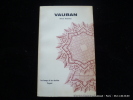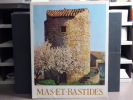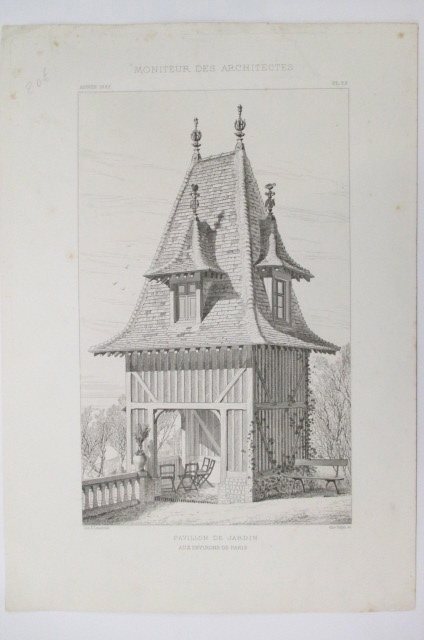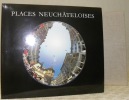-
Type
Any type (2)
Art print (7)
Book (31026)
Disk (1)
Drawings (7)
Engraving (9)
Magazine (130)
Old papers (1)
Photographs (14)
Posters (4)
-
Latest
Last 24h (23)
Last 3 days (17)
Last month (342)
Last week (13)
-
Language
Dutch (1)
English (54)
French (31100)
German (6)
Italian (18)
Japanese (2)
Portuguese (9)
Spanish (11)
-
Century
16th (16)
17th (56)
18th (208)
19th (1560)
20th (9346)
21st (1698)
-
Countries
Belgium (9472)
Brazil (7)
Canada (108)
China (3)
Côte d'Ivoire (63)
Denmark (218)
France (18266)
Germany (1)
Greece (1)
Italy (36)
Switzerland (3026)
-
Syndicate
ALAC (99)
CLAM (42)
CLAQ (94)
CNE (3)
ILAB (10815)
NVVA (1161)
SLACES (1161)
SLAM (8286)
SNCAO (9)
Alfred Rebelliau. Publié par les soins de Jacques Lovie. Préface du Général Weygand.
Reference : 69317
(1962)
Alfred Stieglitz : Camera Work The Complete Photographs, 1903-1917
, Taschen, 2013 Hardcover, 552 pages, English,French,German, 200 x 150 x 50 mm, in very good condition !, dustjacket, photographs in colour / b/w , Nostalgic. ISBN 9783836544078.
Photographer, writer, publisher, and curator Alfred Stieglitz (1864-1946) was a visionary far ahead of his time. Around the turn of the 20th century, he founded the Photo-Secession, a progressive movement concerned with advancing the creative possibilities of photography, and by 1903 began publishing Camera Work, an avant-garde magazine devoted to voicing the ideas, both in images and words, of the Photo-Secession. Camera Work was the first photo journal whose focus was visual, rather than technical, and its illustrations were of the highest quality hand-pulled photogravure printed on Japanese tissue. This book brings together all photographs from the journal's 50 issues.
ALGERIA José Augusto, de BRITO Carlos, de CARVALHO A. Ayres, et alii
Reference : 61536
Triomphe du baroque. Palais des Beaux-Arts 19 septembre - 29 décembre (catalogue).
Bruxelles, Fondation Europalia International, 1991. 23 x 30, 520 pp., très nombreuses illustrations couleurs, broché, très bon état (sauf très légères pliures au dos).
Europalia 91 Portugal.
Le décor des soieries françaises de l'origine à 1815
Van Oest Paris, Van Oest, 1931. In-8 carré broché, couverture illustrée, 43 pages + 32 planches hors texte. Collection Architecture et arts décoratifs. Bon état
Toutes les expéditions sont faites en suivi au-dessus de 25 euros. Expédition quotidienne pour les envois simples, suivis, recommandés ou Colissimo.
Le mobilier Provençal.
Paris Ch. Massin & A.Lévy réunis. sd "1 volume in4 4ff. et 44 planches. En feuilles, chemise de l""éditeur. (Collection de l""Art régional en France). 44 planches de photographies tirées en phototypie sur papier fort, en noir et blanc. Manque la planche 2."
AUTOUR des MAS et BASTIDES.
Editions Detaille Marseille 1964 In-4 carré ( 285 X 230 mm ) de 137 pages, broché sous couverture illustrée en couleurs rempliée. Photographies et dessins dans et hors texte. Edition originale, 1 des 250 exemplaires du tirage de tête numéroté sur beau papier. Très bel exemplaire.
Autour des Mas et des Bastides.
DETAILLE. 1964. In-4. Broché. Bon état, Couv. convenable, Dos satisfaisant, Intérieur frais. 137 pages. Nombreux dessins en noir et blanc et bordeaux dans le texte. Nombreuses planches de photos en héliogravures hors-texte. Couverture hors-texte.. . . . Classification Dewey : 720-Architecture
Exemplaire N°87 / 1500. Nouvelles pages constituant une 3ème série sur l'Art de Bâtir et sur la tradition de la Demeure en Provence. Classification Dewey : 720-Architecture
Planas, alzados y detalles de la Generafife et Alhambra efectuados por Oger International [2 volumes]
Oger International 1999 2 volumes. In-4 30 x 21 cm. Reliures pleine toile bordeaux, dos lisses, pièces de titre cuir noir, 300-206 pp. Exemplaires en très bon état.
La dernière folie du prince Abdelaziz bin Fahd, fil du roi Fahd d’Arabie Saoudite : se faire construire une copie conforme du palais de l’Alhambra de Grenade dans son pays. Enquête sur ce mirage andalou, confiée à un prestigieux cabinet d’architectes et d’ingénieurs parisien, Oger International. Très bon état d’occasion
MONITEUR DES ARCHITECTES. PAVILLON DE JARDIN AUX ENVIRON DE PARIS.
Année 1887. Format : 24,5 x 34,5 cm.
Bel état,restauré.


Merovingian Letters and Letter Writers
, Brepols, 2019 Paperback, xxxi + 386 pages, Size:178 x 254 mm, Illustrations:2 tables b/w., Language: English. ISBN 9782503583587.
Summary Primary sources from the Frankish kingdom during the Merovingian era (ca. 500-750) are few and far between. This volume is a survey of more than 600 Latin letters, selected by the author, that were exchanged between persons in Gaul during that time period. Many are almost entirely unknown and have never been translated into any modern language. While most of the letters were authored by clerics and highly-placed laymen, a small but significant number was composed by women, both religious and lay. For elite individuals, letter networks were the social media of their day. Letters were written to maintain the bonds of friendship, to seek or extend patronage and political alliance, to instruct, rebuke, defend, console, and recommend. Many have come down to us in collections; others are strays embedded in other texts or deperdita that come to light only in the replies of others. This book is a valuable tool for scholars and students alike. In seven readable chapters, the author discusses numerous aspects of the letters and explores how they fit with, and enlarge upon, the better-known sources of the period such as the works of Gregory of Tours, Fredegar, the anonymous History of the Franks (LHF), and various saints' vitae. An appendix containing a summary of each letter in translation renders these texts more readily accessible to the English speaker. TABLE OF CONTENTS Introduction and Timeline of Letter Collections Chapter 1: Amicitia Networks Part 1: Sidonius Apollinaris to Nicetius of Trier and Friends Chapter 2: Amicitia Networks Part 2: Venantius Fortunatus and the Later Sixth Century Chapter 3: Amicitia Networks Part 3: Columbanus to Boniface and Lull Chapter 4: Kings and Popes Chapter 5: Women's Letters Chapter 6: Bearers and Gifts Chapter 7: Letter Writers and the Bible Conclusion Appendix: Summaries of Individual Merovingian Letters
Retablos de la Comunidad de Madrid Siglos a XV a XVIII
, Comunidad de Madrid, Madrid, 1995 Paperback, 411 paginas, Spanish, Illustraciones,. ISBN 9788445110119.
Retablos -- Espan?a -- Madrid (Comunidad Auto?noma) -- Cata?logos. Retablos -- Madrid (Comunidad Auto?noma)
Eglises et Couvents de Florence.
Florence, Alinari frères,1905 ; in-12° broché, couverture rempliée crème illustrée en noir , titre en noir; 287pp., très nombreuses illustrations photographiques en noir.
Guide du visiteur à Florence très illustré. ( CO1)
ALINE HANNOUZ- LIONEL ORSI- LAURE MARIEU- BENIER G
Reference : RO20278367
(2024)
ISBN : 2958763323
Les architectes-conseils de l'etat - N°30 - Seminaire Valencia 3-6 Octobre 2024- Eaux fortes Valencia, architectures et territoires- Valencia approches hydro-geographique, historique & urbaine- Parcourir le territoire de Valencia au fil de l'eau ...
ARCHITECTES CONSEILS DE L'ETAT. 2024. In-4. Broché. Etat d'usage, Couv. convenable, Dos satisfaisant, Intérieur frais. 211 PAGES - Nombreuses illustrations couleur, dans et hors texte - Principalement en francais + quelques fois en espagnol - 2 photos disponibles. . . . Classification Dewey : 720-Architecture
ALINE HANNOUZ- LIONEL ORSI- LAURE MARIEU- BENIER GUILLAUME /// Valencia approches hydro-geographique, historique & urbaine- Parcourir le territoire de Valencia au fil de l'eau - Ce que l'eau nous apprend de l'interet general ... Classification Dewey : 720-Architecture
Parole di montagna. Il lessico geografico nelle Alpi Cozie
, Brepols, 2020 Paperback, xvi + 323 pages, Size:156 x 234 mm, Illustrations:50 tables b/w., 18 maps b/w, 2 allegato, Languages: Italian, Occitan. ISBN 9782503585222.
Summary Le "parole di montagna" sono state studiate soprattutto perch le loro radici etimologiche risalgono spesso a epoche precedenti alla romanizzazione delle Alpi: in questo lungo periodo, il lessico geografico rimasto vivo nelle parlate occitane, subendo delle modifiche anche importanti non solo dal punto di vista fonetico, ma anche dal punto di vista del significato. Questo volume da un lato rappresenta in sincronia la variazione diatopica del significato delle "parole di montagna", attraverso un apparato di carte semasiologiche opportunamente commentate, dall'altro restituisce la speciale "visione del mondo" soggiacente alla strutturazione del lessico geografico in un determinato numero di localit , attraverso una trattazione articolata per campi semantici e un Lessico specifico. La ricerca da cui nasce questo libro ha coinvolto dieci localit di parlata occitana distribuite sui due versanti della Alpi Cozie, a pi di mille metri di quota, ed stata svolta dall'autrice per la redazione della sua tesi di dottorato (che ha vinto il premio Peter T. Ricketts promosso dall'AIEO). TABLE OF CONTENTS 1. Uno studio sulla semasiologia delle "parole di montagna" 1.1. Dagli stimoli personali alle motivazioni scientifiche 1.2. Struttura del volume 2. Le Alpi Cozie 2.1. Cenni di storia dell'area 2.2. Da Salbertrand ad Argentera 2.3. L'area linguistica 2.3.1. Piano sociolinguistico 2.3.1. Piano linguistico 3. La ricerca 3.1. La ricerca semasiologica nella geografia linguistica 3.1.1. Il primo studio sulle aree semantiche 3.1.2. Le carte semasiologiche negli atlanti linguistici della Rom nia 3.1.2.1. Atlas Linguistique et ethnographique de la Gascogne 3.1.2.2. Noul Atlas Lingvuistic rom n pe regiuni - Oltenia 3.1.2.3. Atlas linguistique et ethnographique de l'Alsace 3.1.2.4. Atlas Linguistique et ethnographique de Provence 3.1.2.5. Atlas Ling stico Galego 3.1.2.6. Atles Ling stic del domini catal 3.1.3. Esperienze italiane di ricerca semasiologica 3.1.3.1. Atlante Lessicale Toscano 3.1.3.2. Atlante Linguistico della Sicilia 3.1.3.3. Atlante Linguistico ed Etnografico del Piemonte Occidentale 3.1.4. Scelte di metodo 3.2. L'elemento umano 3.2.1. Raccoglitrice 3.2.2. Informatrici e informatori 3.3. L'indagine 3.3.1. Individuazione dei tipi lessicali 3.3.2. Primo ciclo di interviste 3.3.3. Costruzione del questionario II 3.3.4. Secondo ciclo di interviste 3.3.5. Organizzazione dei materiali nel Lessico 3.3.6. Analisi semantica dei lessemi 3.3.7. La grafia 4. Analisi semantica del lessico geografico 4.1. L'analisi 4.1.1. Che cosa si intende per campo semantico 4.1.2. Che cosa si intende per tratto distintivo 4.1.3. Che cosa si intende per tassonomia 4.1.4. Polisemia e variazione diatopica del significato 4.1.5. Fonti lessicografiche 4.2. La pedologia 4.2.1. Le pietre 4.2.2. Le pietraie 4.2.3. Le frane 4.2.4. La roccia compatta 4.2.5. Il fango 4.3. Morfologia del rilievo 4.3.1. I ripari 4.3.2. Le spaccature 4.3.3. Le depressioni del terreno 4.3.4. Il piano 4.3.5. Il pendio 4.3.6. Il solco vallivo 4.3.7. Il rilievo isolato 4.3.8. Le creste 4.3.9. Tracce e sentieri 4.4. Le acque 4.4.1. Le acque correnti 4.4.2. Le acque ferme 5. Considerazioni conclusive 5.1. Considerazioni di metodo 5.2. Considerazioni sulla variazione semantica in diatopia 5.3. Considerazioni sull'analisi semantica Allegati Questionario I Questionario II Appendice Impostazione del lessico La struttura delle voci Lemma Significato Materiale informativo Forme correlate Toponimi Geosinonimi Lessico Indice dei traducenti Bibliografia Atlanti linguistici Dizionari e grammatiche Studi citati
Avignon au XIVème siècle - Palais et Décors
Editions Ecole Palatine, 2006, in-4 rel. toile (23 x 30,5),144 p., nombreuses illustrations n. et . et coul., couverture d'origine contrecollée sur plats plastifiés, marques de bibliothèque en page de titre, sinon intérieur très propre, bon état.
Voir le sommaire sur photos jointes.
Gerard ter Borch en de Vrede van Munster
, Uitgeverij WBOOKS 1998, 1998 Softcover, 56 pagina's, Nederlands, 270 x 210 mm, boek in nieuwstaat, met illustraties, . ISBN 9789040092398.
Op 15 mei 1648, werd in het stadhuis van Munster de vrede tussen Spanje en de Republiek der Verenigde Nederlanden gesloten. De schilder Gerard ter Borch (1617-1681) was er ooggetuige van en legde deze plechtige bijeenkomst vast in een groepsportret getiteld De be diging van de Vrede van Munster. Dit unieke kunstwerk is de enige geschilderde weergave van de vredessluiting in Munster en is daarmee een historisch document van onschatbare waarde. Het boek is gewijd aan de activiteiten van Ter Borch in de jaren 1646 tot 1648 als portretschilder in Munster, waar hij vele Nederlandse en buitenlandse afgevaardigden portretteerde.
SEQUENCE 1 Painting and Sculpture of the Fran ois Pinault Collection
, Skira, 2008 HB, 280 x 240 mm, 272 pages, 200 Kleurenillustraties. E/ F/ IT edition. ISBN 9788861302167.
the Fran ois Pinault Collection
Medieval Monastery of Saint Elijah: A History in Paint and Stone
, Brepols, 2021 Hardback, 432 pages, Size:225 x 280 mm, Illustrations:10 b/w, 150 col., 2 tables b/w., 1 maps b/w, Language: English. ISBN 9782503589435.
Summary Blending innovative art historical analysis with archaeology, epigraphy, history, liturgy, theology, and landscape and memory studies, The Medieval Monastery of Saint Elijah: A History in Paint and Stone is the first comprehensive interdisciplinary study of a deeply intelligent yet understudied male Benedictine convent near Rome. The only monastery known to have been dedicated to the prophet Elijah in the Latin West, it was rebuilt c.1122-26 with papal patronage. Today, the monastery is represented by its church of Sant'Elia, a stone basilica endowed with its original Cosmati marble pavement and liturgical furnishings, early and high medieval sculptures and inscriptions, and vibrant wall paintings that include unique depictions of the prophet Elijah and the twelve tribes of Israel as warriors, an apse program with a distinctly elite Roman origin, and an important narrative cycle of the Apocalypse. An outlying chapel marks the site of a theophany that sanctified the landscape and gave the monastery its raison d' tre. The Medieval Monastery of Saint Elijah makes significant contributions to current art historical debates concerning communal identity and the construction of social memory, artistic creativity and processes, the multisensory and exegetical capacities of works of visual art, intersections of topography and sanctity, and the effects of medievalism on our understanding of the Middle Ages. TABLE OF CONTENTS Introduction: 1769/2019 Chapter One: Recovering the Romanesque Monastery The Monastery Today Reversing Time's Arrow at the Church of Sant'Elia The Twelfth-Century Corpus Conclusion Chapter Two: vetustum monasterium Sancti Heliae A Sacred Landscape Remembering Abbots Past From Temple to Church, or, Building Like Benedict Conclusion Chapter Three: The Materiality of Memory Representation versus Materiality The Crypt as locus antiquior Promoting Cult, Protecting Community Conclusion Chapter Four: The Monk as the New Elijah In the Name of Elijah In the Image of Elijah Prophets as Models At the Altar of Elijah Conclusion Chapter Five: Seeing Apocalypse at Sant'Elia Painting the Apocalypse John the Revelator Conclusion Chapter Six: Why the Apocalypse? Exegetical Images The Politics of Apocalypse Conclusion Chapter Seven: A Papal Church in Lazio A Basilica Reformed The Images around the Altar Establishing the Papal Perimeter Conclusion Conclusion: Bovo famulus tuus
ARCHITECTURE COLONIALE.GUADELOUPE.
Albert Morancé.(s.d.).Texte et planches sous lacet,en feuilles.Cachets des Frères Arsène-Henry,architectes.
A.F. Vandevorst Ende Neu. Mode.
, Hannibal Kannibaal , 2018 Hardback, 280x200mm, 592 pages Illustrated. English edition. ***VERY Fine! *NEW. ISBN 9789492677259.
Voor het eerst in twintig jaar brengen An Vandevorst en Filip Arickx, samen het ontwerpersduo A.F. Vandevorst, een overzichtsboek uit dat een bijzondere inkijk biedt in hun opwindende universum. Leder, fetisj en strakke uniformen, maar ook kitsch, kunst en sensuele plooien? De wereld van A.F. Vandevorst is eindeloos rijk. In 1987 ontmoeten An Vandevorst en Filip Arickx elkaar op de Antwerpse Academie voor Schone Kunsten. Tien jaar later richten ze hun eigen modelabel op en tonen ze hun eerste collectie in Parijs. Nauw verwant aan de Antwerpse Zes groeiden ze intussen uit tot Belgies meest edgy designerduo met internationale erkenning tot in Rusland en werkten ze samen met de groten der aarde, onder wie de flamboyante hoedenontwerper Stephen Jones. De esthetiek van A.F. Vandevorst is het resultaat van hun sterke liefde voor de beeldende kunst, muziek en literatuur en hun grote interesse in culturele archetypes. Dit boek focust op hun uiteenlopende inspiratiebronnen, zoals Joseph Beuys, de militaire en medische wereld, het uniform en Japan. Ook de invloed van muzikant Blixa Bargeld (Einsturzende Neubauten/Nick Cave & the Bad Seeds) is sterk aanwezig in hun artistieke filosofie. Op een intuitieve manier biedt deze publicatie een bijzonder inspirerende blik op de fascinerende wereld van A.F. Vandevorst. Laat u onderdompelen in twintig jaar grenzeloze passie voor mode en kunst. A fascinating insight into the stimulating universe of Belgium's cult fashion designer duo A.F.Vandevorst. A universe of fetishes, fur, leather, sensual folds and tight straitjackets? That is what Belgian fashion designers A.F.Vandevorst stand for. This publication celebrates their twentieth anniversary. An Vandevorst and Filip Arickx met in 1987, on their first day of school at the Royal Academy of Fine Arts in Antwerp. Ten years later, they set up their company Blixa and presented their first collection as A.F.Vandevorst in Paris. They have collaborated with such people as the flamboyant and worldfamous hat designer Stephen Jones and have grown to become one of Belgium's most edgy cult designers, closely connected to the Antwerp Six (Dries Van Noten, Ann Demeulemeester, Walter Van Beirendonck). A.F.Vandevorst's aesthetics are the result of their strong love for the visual arts, music and literature and of their great interest in cultural archetypes. This book focuses on their diverse inspirations, including Joseph Beuys, the military and the medical scene, and other artists An and Filip feel strongly connected to. Among them is Blixa Bargeld (Einstu?rzende Neubauten), who was the sourceof their first company's name and has been a big inspiration ever since. This book gives an intimate, very exciting and stimulating insight into the fascinating world of A.F.Vandevorst. Be inspired by twenty years of limitless passion for fashion. With an introduction by Alix Browne and contributions by a.o. Dries Van Noten, Dirk Braeckman, Tim Blanks, Blixa Bargeld, Hannelore Knuts, Sally Singer, Linda Loppa, Suzy Menkes.
THE FANTASTIC GUSTAVE DOR
, Prestel Publishing, 2023 HB, 260 x 205 mm, 480 p, 23 Kleurenillustraties, 380 z/w illustraties, ENg edition , ISBN 9783791379630.
This glorious, authoritative, and unprecedented retrospective of Dor 's prints and paintings, drawn from an oeuvre of more than 10,000 works, comes in a spectacularly ornate package that reflects the artist's own dramatic style. If you were a consumer of literature in the nineteenth century, chances are the volumes in your library featured the illustrations of Gustave Dor . From the Bible to Shakespeare, Balzac to Milton, Cervantes to Poe, Dor 's intricate, romantic, and exuberant drawings brought great works to life, and were as treasured as the stories and poetry they depicted. Furthermore, as this magnificent book reveals, he was also a skilled sculptor, painter, and cartoonist. This book spans Dor 's entire career, with chapters dedicated to specific works such as The Divine Comedy, Don Quixote, Tennyson's Idylls of the King, and medieval fairy tales-each featuring exquisite full-page reproductions that allow Dor 's genius for line, shading, and texture to shine through. The authors also provide a background on the techniques that Dor employed to achieve his exquisite works. Fans of Dor will appreciate this volume's spectacular production, which features quarter binding, gold foil stamping, embossing on the cover and spine, a belly band, and silkscreen printing on three edges. Filled with incisive analysis and expert historical perspectives, this book is the consummate collector's item-a volume as expansive and sensational as the artist himself.
Encyclopédie pratique illustrée des colonies françaises. Préface de Paul Doumer. Avant-propos de Louis Proust. Tome I. Tome II.
Paris, Librairie Aristide Quillet 1931, 320x255mm, 431 + 416pages, reliure d'éditeur. reliure percaline avec titre et auteur dorés au dos et sur le plat supérieur. Cachet de possesseur sur la page de titre. Rousseurs très marginales.
photos en héliogravure, planches en couleurs contrecollées, Pour un paiement via PayPal, veuillez nous en faire la demande et nous vous enverrons une facture PayPal
Une histoire des serres - De l’orangerie au palais de cristal.
Quae, 2010, 144 p.
Ouvrage en bon état.
Places neuchâteloises. Photographies de Jean-Marc Breguet.
Hauterive, Editions Gilles Attinger 1987, 225x250mm, 123pages, reliure d'éditeur sous jaquette. Sous emboîtage en toile. Très bel exemplaire.
Pour un paiement via PayPal, veuillez nous en faire la demande et nous vous enverrons une facture PayPal
La Bulgarie Orientale
suivie d’une notice sur le Danube par J.MICHEL et l’explication des inscriptions par M Léon RENIER,in 12 pleine toile verte de l’éditeur,faux-titre, frontispice titre,295 pages tranches dorées,illustrations hors-texte complet des deux cartes en fin de volume,Adrien Le Clerc & Cie .Dillet éditeur,sans date.
 Write to the booksellers
Write to the booksellers













